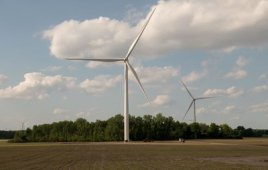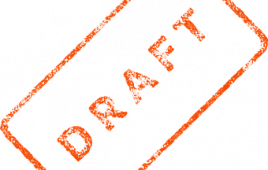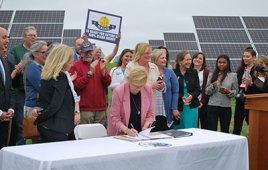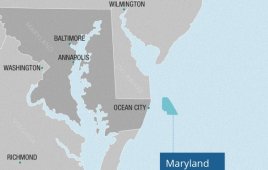Gorka Prada / NEM Solutions U.S.
The main objective of the big players in the wind industry is to lead in an increasingly competitive market. For them, leadership is about adapting to the inevitable change to a digital environment and then, somehow, sift through the mountains of information available to managers and making good decisions.
Achieving the so-called digital transformation is a big challenge that companies will have to face. It will not be easy because more than 60% of the companies have failed in their digitalization strategy. So how might that figure be lowered?
Getting a grip
First, define the problem. It is common to see a lot of digital solutions and new tools are offered as a Digital Holy Grail. Why should a wind industry player need these digital tools to handle information?
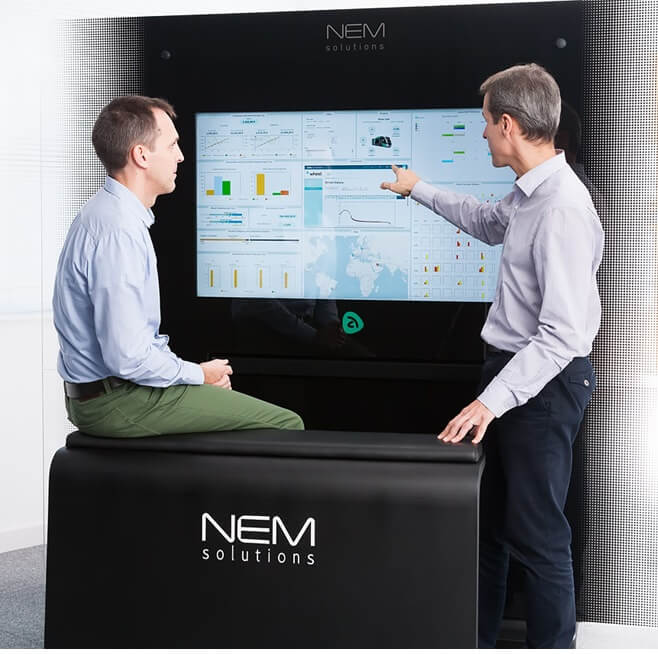
The A.U.R.A. Desk workstation displays charts, graphs, and tables of information from a wind farm or other facility so operators can make timely and informed O&M decisions.
The problem in many companies is not a lack of digitalization. The problem is simpler and older: They do not have the needed information to make decisions at the right time. And if they have the information, it is not in a useful format.
Second, companies try to do everything in-house to avoid cooperating with other firms. This is common in the wind sector. The assumption is that avoiding outside assistance lowers O&M costs. The consequences of this trend have been observed when companies occasionally announce they are lowering their digitalization goals because they have problems achieving them.
It is natural to have problems. Winning this daily race calls for making fast decisions to solve these problems. Winning also requires asking for support from those who can lower the risk profile and make the race a bit more comfortable.
An example
One example of how to successfully implement information technology that makes data more useful comes from Siemens Gamesa, a company often considered a wind industry leader.
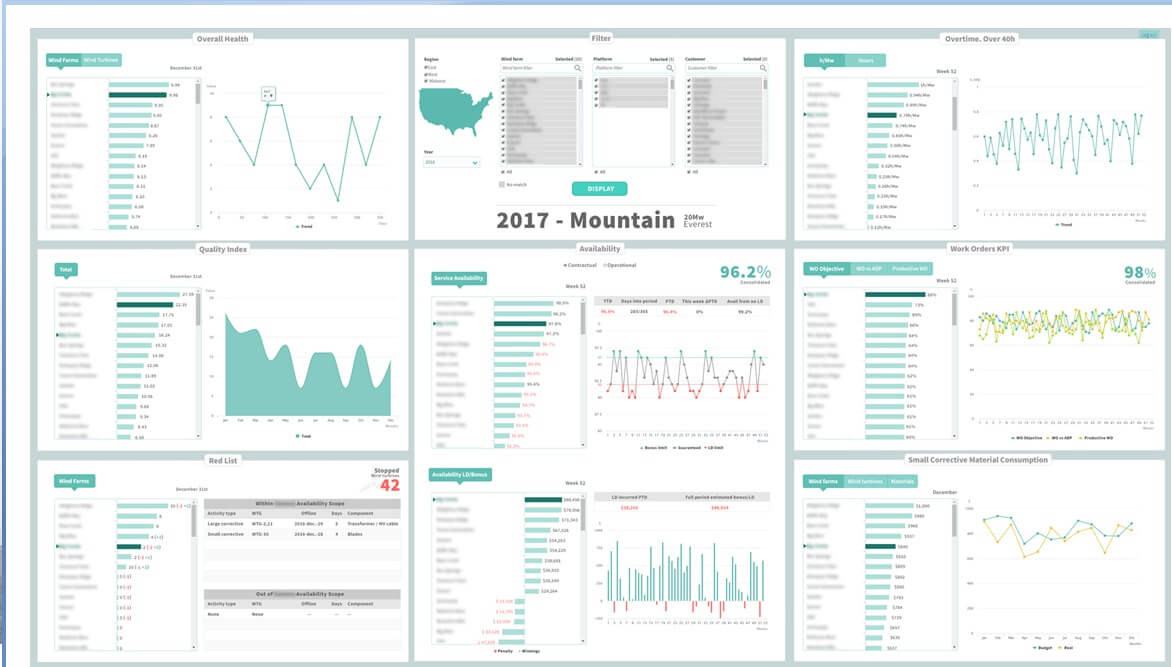
A.U.R.A. Desk dashboard shows the key performance indicators for a wind farm. For example, the top three panels show.availability, overall health, and which turbines are not working. Pick on the image for a more readable version.
To achieve its digitalization goals, the company recently collaborated with NEM Solutions to implement the A.U.R.A. desk solution. It lets Siemens Gamesa´s wind farm operators better understand the current status of their fleets, make more accurate business decisions, and bringing them even faster to the digital world.
“One of the best system advantages that we have is easy access the information,” says Eduardo Llorente, director of Services Operations North America. “From now on we will be able to concentrate on the content rather than on the way we obtain the information. All of us will see the same information at the same time. This will be a key factor in any decision-making process.”
A closer look
The solution Siemens Gamesa found useful in managing its mountains of data combines in-house expertise with big-data techniques and business intelligence. This approach enables A.U.R.A. desk to provide a view of the wind farm or the fleet, also notifying the future needs of the assets and their efficiency by continuously monitoring them. An advanced workstation and algorithms compare, analyze, and extract knowledge from the entire fleet. It is a way to reduce risk because the information that the company needs is collected and presented in a way to make tough decisions faster than previously possible. It is not about data, it is about transforming data into knowledge.
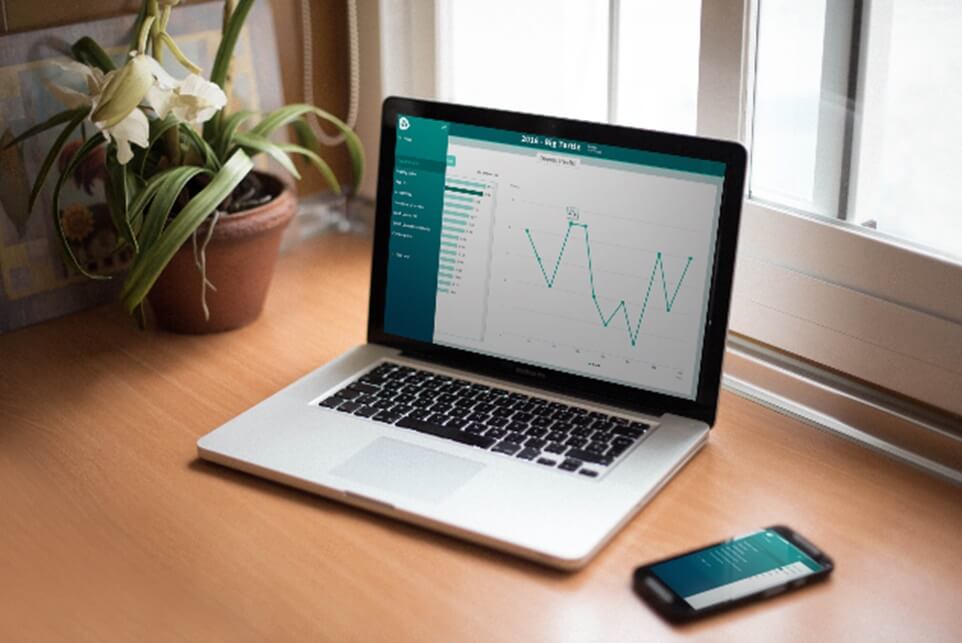
Visualizing data on the dashboard makes it easy to use information from all over the world. The same data can be available for handheld and portable devices such as laptops, smartphones, and tablets.
A.U.R.A. desk is the result of a consultancy project carried out by NEM Solutions and is based on customer objectives, processes, and key performance indicators (KPIs). For example, KPIs for a wind farm might include power output from each turbine and the farm, hourly power forecasts, which wind turbines are down and why, and so on.
Accomplishing total digital transformation
Mountains of data are difficult to climb, and expertise is needed to make sense of it all. To fully accomplish digital transformation goals we recommended a twofold approach: data analytics and business intelligence. A.U.R.A is patented technology for critical system failure anticipation. The system accurately predicts the future of each of wind turbine. Instead of simply comparing the behavior of assets with standard statistical data, A.U.R.A. individually models the normal behavior of each asset and subsystem in its own context.
While this method almost guarantees the best performance of the fleet, it is not enough to help the main players in the wind sector because they need a big-picture view to make the best decisions. This is where A.U.R.A desk comes into play, closing the circle: digital transformation accomplished.
A.U.R.A Desk makes it easy to interpret the KPIs. These indicators are calculated with the most updated information. The system can also benchmark assets performance. Comparisons can be made between technologies, wind farms, or wind turbines based on economic and technical issues such as maintenance expenses, evolution (corrective and preventive), availability, production, and reliability.
Filed Under: Uncategorized


